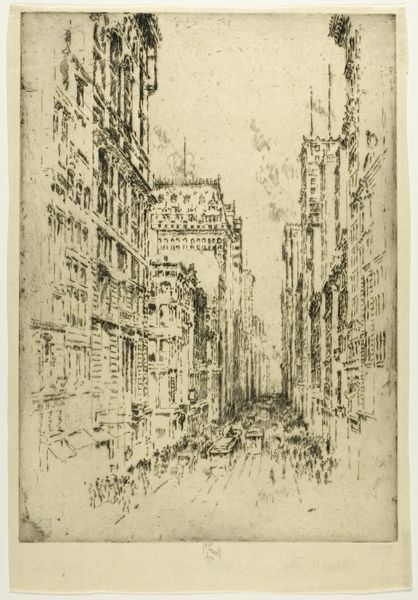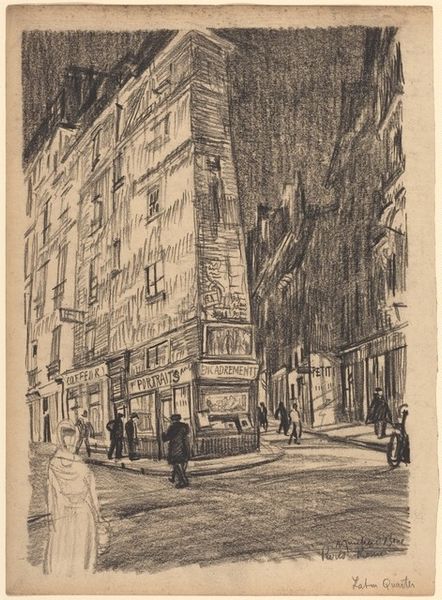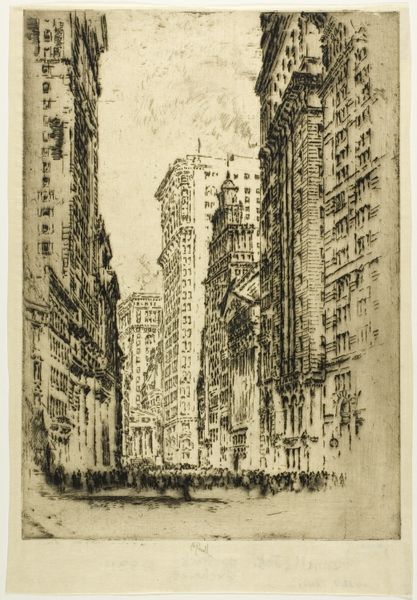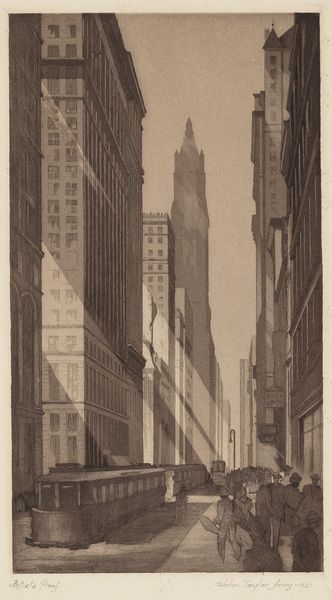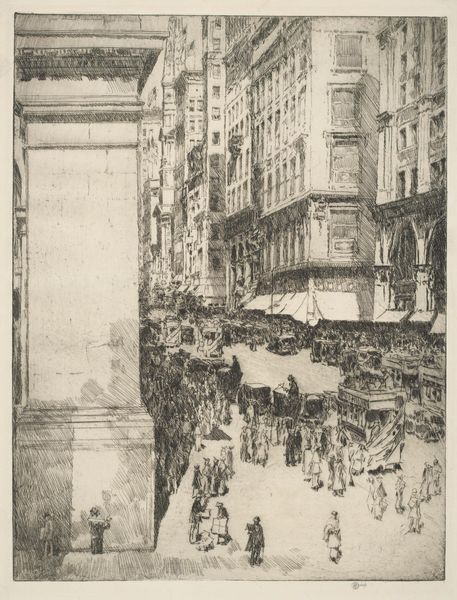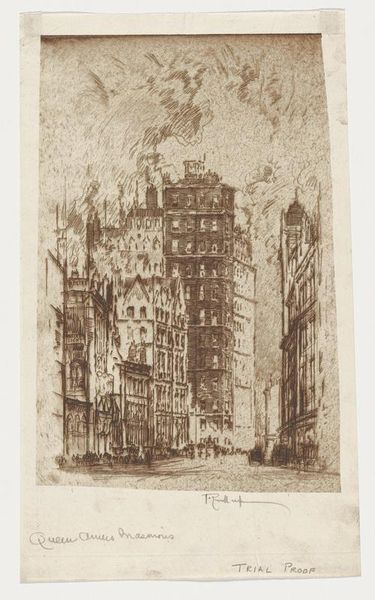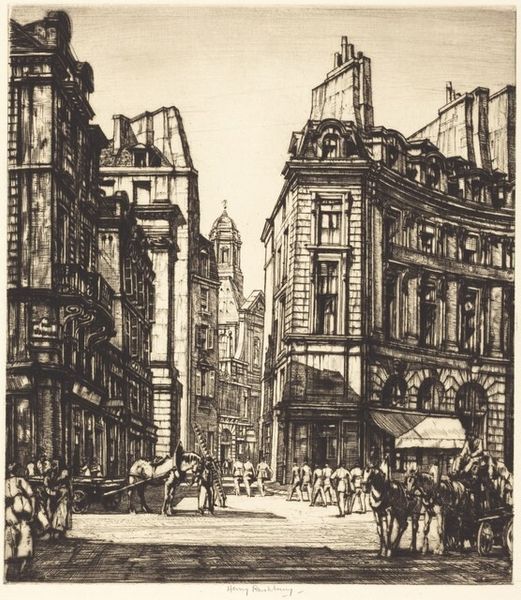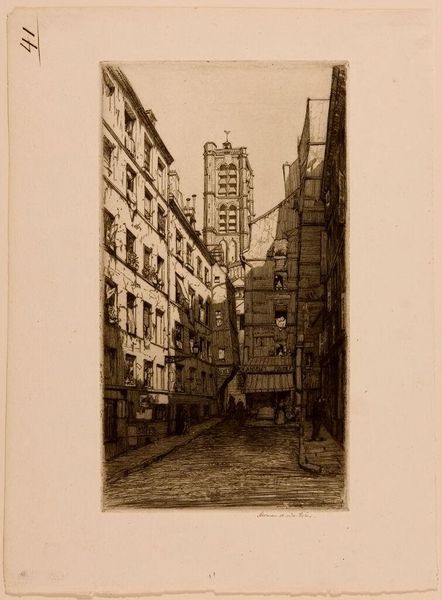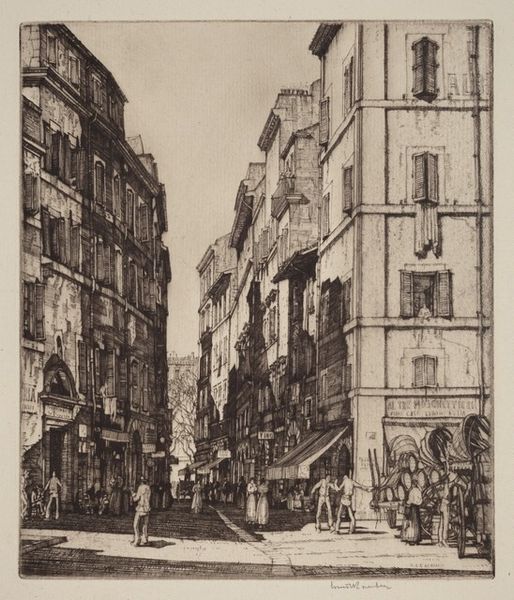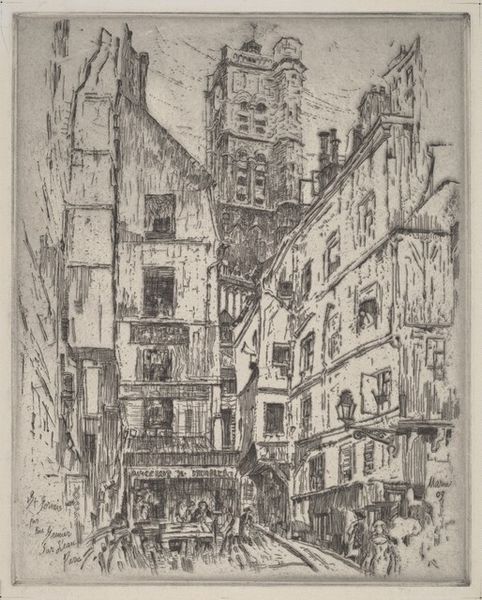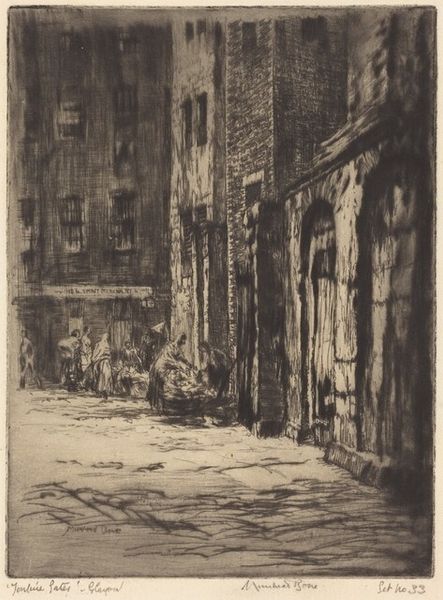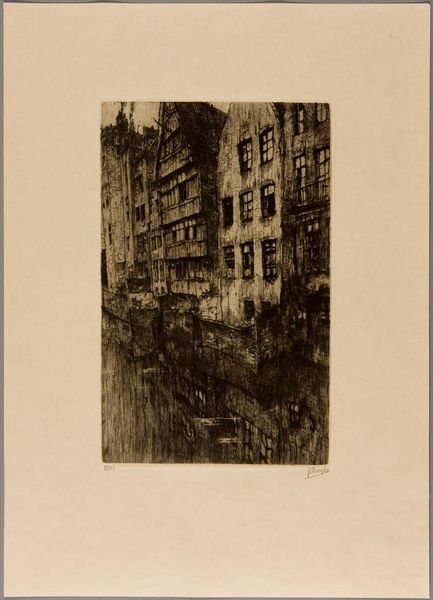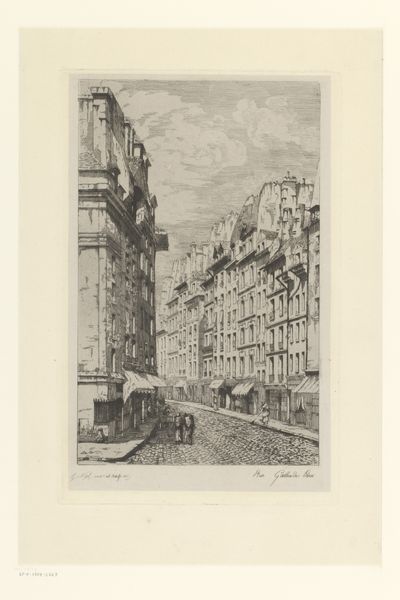
drawing, print, etching
#
drawing
# print
#
etching
#
cityscape
#
modernism
Dimensions: plate: 35.24 × 23.18 cm (13 7/8 × 9 1/8 in.)
Copyright: National Gallery of Art: CC0 1.0
Editor: We’re looking at Ernest Stephen Lumsden’s etching "The Saut-Buckets" from 1926. It feels…grimy, almost oppressive, with these towering buildings looming over the street. What story do you think Lumsden is trying to tell here? Curator: This etching really encapsulates the anxieties of early 20th-century urban life. Look at the density, the way the buildings seem to suffocate the street below. It's not just a depiction of a cityscape; it’s a visual representation of social inequalities, the concentration of wealth and power versus the cramped, unsanitized conditions in which so many lived and worked. Do you notice how the buildings are imposing, but we don't really see any individual faces, any sign of life, except perhaps anonymous laborers? Editor: That’s true; it’s all architecture and infrastructure. The light barely touches the street. Curator: Exactly. The artist invites us to think about those obscured from view by structures like the buildings portrayed. In light of modernist interest in depicting urbanization, industrialization, and the subsequent alienation of workers, where does this etching sit? Do you think it reinforces these issues, or resists them? Editor: I see your point. I was initially focused on the mood, but now I understand how the work comments on the relationship between the architecture and the people it impacts, and, as you say, perhaps oppresses. It speaks to the social consequences of rapid urbanization. Curator: And think about the term "Saut-Buckets"— it may allude to a derogatory reference, or hidden local connotation, to marginalized groups living in such conditions. This is exactly where art history and contemporary social concerns meet. Editor: Wow, that changes everything. It adds layers of meaning I hadn't considered before, that connect the buildings and the inhabitants in this fraught relationship. Curator: It highlights how art can become a powerful tool for understanding social and political realities in different eras, by bringing context to the forefront. Editor: This conversation was incredibly illuminating. I will definitely consider these points moving forward!
Comments
No comments
Be the first to comment and join the conversation on the ultimate creative platform.
